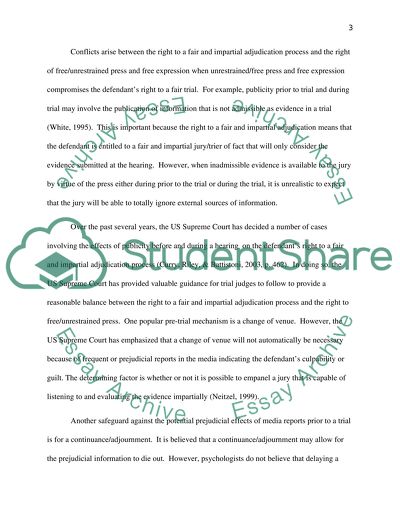Cite this document
(“Balancing Freedom of the Press and the Right to a Fair Trial Term Paper”, n.d.)
Balancing Freedom of the Press and the Right to a Fair Trial Term Paper. Retrieved from https://studentshare.org/law/1478879-balancing-freedom-of-the-press-and-the-right-to-a-fair-trial
Balancing Freedom of the Press and the Right to a Fair Trial Term Paper. Retrieved from https://studentshare.org/law/1478879-balancing-freedom-of-the-press-and-the-right-to-a-fair-trial
(Balancing Freedom of the Press and the Right to a Fair Trial Term Paper)
Balancing Freedom of the Press and the Right to a Fair Trial Term Paper. https://studentshare.org/law/1478879-balancing-freedom-of-the-press-and-the-right-to-a-fair-trial.
Balancing Freedom of the Press and the Right to a Fair Trial Term Paper. https://studentshare.org/law/1478879-balancing-freedom-of-the-press-and-the-right-to-a-fair-trial.
“Balancing Freedom of the Press and the Right to a Fair Trial Term Paper”, n.d. https://studentshare.org/law/1478879-balancing-freedom-of-the-press-and-the-right-to-a-fair-trial.


